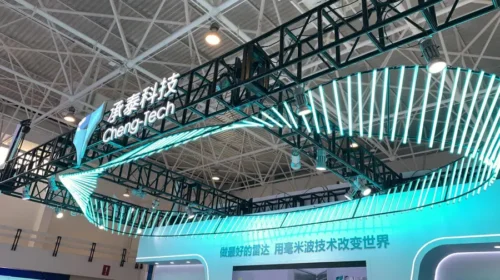Lesi Group underwhelms with IPO in crowded online ad market

The Chinese provider of mobile advertising services has finally won IPO approval at the fourth attempt, but faces a muted market reception
Key Takeaways:
- Lesi Group’s revenue has been growing but its gross margin fell to 15.5% in the first nine months of last year
- The company has a highly concentrated customer base, with more than two thirds of revenue coming from just five clients. It also relies heavily on Alibaba and two other major suppliers
By Fai Pui
China’s Lesi Group Ltd. (2540.HK), a provider of mobile advertising services, is set to debut on the Hong Kong stock exchange as the first mainland company to list there in the year of the dragon.
However, early signs indicate the stock will not exactly roar onto the market. The company, which counts Alibaba (BABA.US; 9988.HK) among the key suppliers of its ad space, was looking to raise up to HK$188 million ($24 million) to bolster its business, but investors subscribed to only 19 million yuan of shares through margin financing in the two days after the IPO offer.
The stock launch is being fast-tracked under a new system on the Hong Kong Stock Exchange that aims to cut the time lag between a new listing and the start of trading to as little as two business days. Lesi Group launched its IPO on Feb. 29 with a cut-off date of March 5 and a debut set for March 8.
Another new entrant on the same launch trajectory is Hong Kong-based steel contractor WK Group (2535.HK), which was hoping to raise up to HK$135 million.
For Lesi Group, just getting this far has been a test of endurance. The company finally passed its Hong Kong listing hearing after three failed IPO tries since 2022, planning to issue 125 million shares priced between HK$1.1 and HK$1.5 per share, with investors required to buy at least 2,500 shares for about HK$3,788.
Lesi Group’s business revolves around the platform economy. The company provides clients with a range of mobile advertising services to showcase their brands on sites operated by its media partners. The service provider helps the clients to produce advertising materials and optimize marketing campaigns to drive online traffic. But the generally embattled state of the tech sector has meant a lukewarm response to the IPO.
On the face of it, business is good. The company’s operating income jumped 41.6% in the first three quarters of last year, as clients bumped up their advertising spending in hopes of an economic rebound from the Covid pandemic.
The company gets most of its money from mobile advertising solutions. The revenue share from this part of the business rose from 90.9% in 2020 to 92.2% in 2022 and 96% in the first three quarters of last year. But the customer base has shrunk to 106 from 164 at the end of 2022. The company said its decision to focus on a major customer, identified only as “client M”, was behind the loss of 58 clients. Meanwhile, the revenue from its other main business segment, advertising distribution, fell nearly 20% to around 20 million yuan ($2.78 million) in the first three quarters of last year.
Although revenues have been growing, gross margin has been squeezed. The margin rate stood at 20.4% in 2020, falling to 19.9% a year later and ticking up to 20.9% in 2022. But gross margin fell sharply to 15.5% in the first nine months of last year, with the drop blamed on lower income from ad distribution services and higher costs resulting from reduced rebates by media partners.
The pressures have weighed on profitability. The company turned a profit of 49.77 million yuan in 2020, rising to 57.49 million yuan and 68.31 million yuan over the next two years. In the first nine months of 2023, it logged a profit of 48.91 million yuan, a year-on-year rise of 22.2% but far below the 41.6% revenue jump in the same period.
Another factor keeping profits in check is fierce competition in the industry. China’s mobile advertising market is fragmented between many players, with the top five companies holding a combined market share of just 9.6% in turnover terms, according to iResearch data. In that arena, Lesi Group could only eke out a market share of 0.1%.
Small circle of clients and suppliers
Strong ties with clients are essential for small players to survive in the industry. This would explain why the company’s client base is so concentrated. The revenue contribution from the top five clients fell from 75.4% to 67.3% and 48% between 2020 and 2022 but surged again to 68.7% in the first nine months of last year. In that period, the company relied on its single biggest client for a hefty 40.8% of revenue.
Addressing the risk of overdependence on a handful of customers, Lesi Group said it had maintained strategic friendships with these five clients for one to six years. However, the company conceded that its contracts run for only a year and are renewed by mutual consent. Moreover, either party can pull out with written notice between 30 and five days before the renewal date. That means a player of Lesi’s limited size lacks strong bargaining power with its clientele.
The company is also exposed to dependence risks on the supply side. It relies on five suppliers, especially Alibaba, to provide ad space on their platforms in which to place the clients’ ads. In 2020, payments to these five suppliers accounted for 92.5% of the company’s total costs, increasing to 93.9% in 2021. The share fell slightly to 70.5% in 2022 before spiking again to 88.8% in the first nine months of last year.
Looking more closely, payments to the top three suppliers accounted for 65.7% of total costs in those nine months. Therefore, the company’s financial performance stands to suffer if any of the platform partners slip down the industry rankings.
The relentless pursuit of an IPO despite a stock market slump can be a signal of cash flow challenges. The company registered a net operating cash outflow of 57.39 million yuan in the first nine months of last year compared with a net inflow of 13.01 million yuan in the same period of 2022. A cash infusion of 12.97 million yuan boosted the group’s cash and cash equivalents to 14.64 million yuan by the end of September, but that was still 75.3% below the level at the end of 2022, a situation that could have spurred the renewed IPO bid.
The company’s post-listing value is likely to range between HK$550 million and HK$750 million. Based on the nine-month profit of 48.91 million yuan, the figure for the whole year would come in at 65.22 million yuan, generating a price-to-earnings (P/E) ratio of 7.7 to 10 times. Compared with the 5.7 times for Newborn Town (9911.HK), another company in the mobile advertising sector, Lesi is not cheap.
China’s mobile advertising market has ballooned in recent years, surging from about 366 billion yuan in 2018 to about 895 billion yuan in 2022, a compound annual growth rate of about 25%. But the expansion rate is predicted to slow to only 8.7% from 2023 to 2027, according to iResearch. Having finally cleared the IPO hurdle, Lesi Group will now have to chart a careful course to stand out in this fiercely competitive market.
To subscribe to Bamboo Works free weekly newsletter, click here






